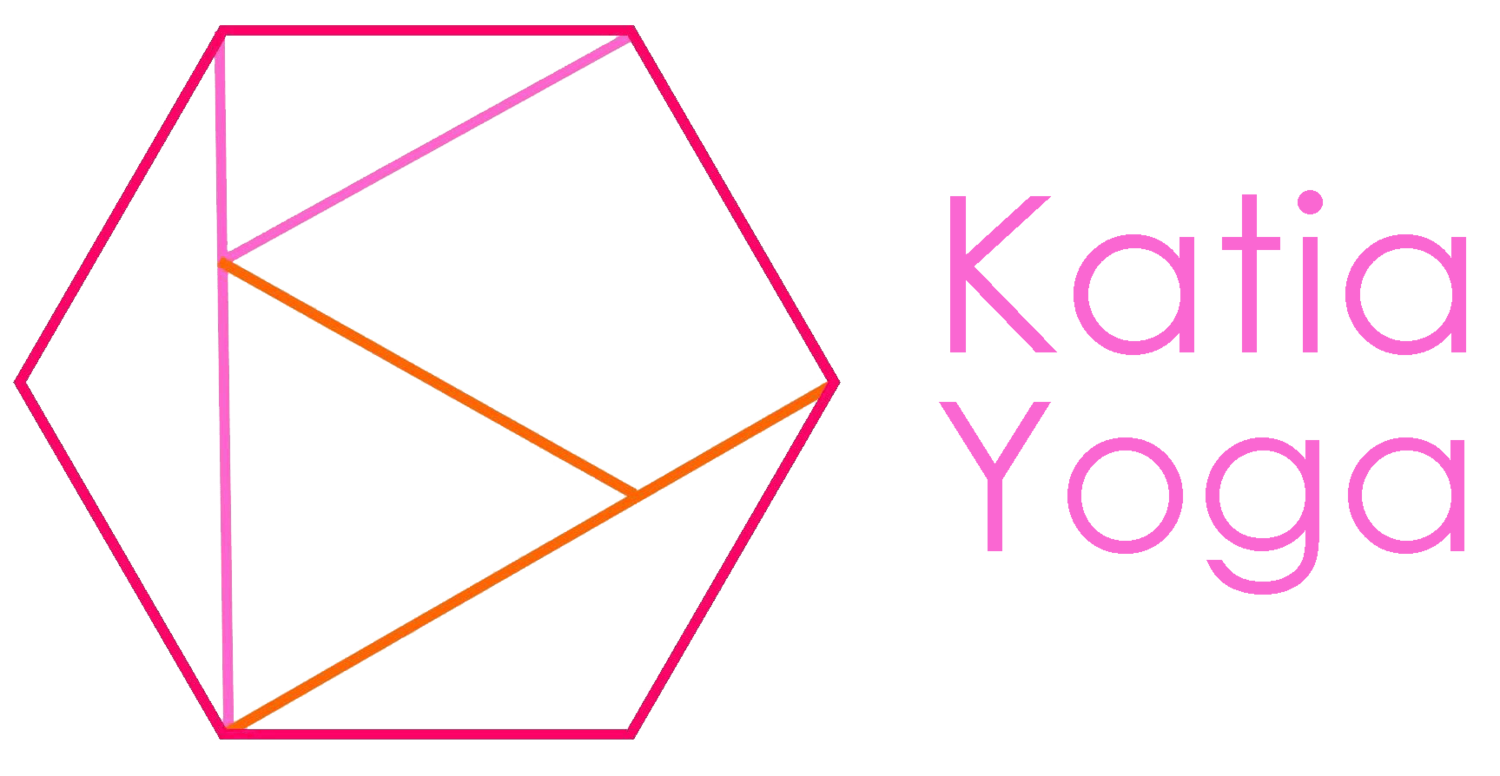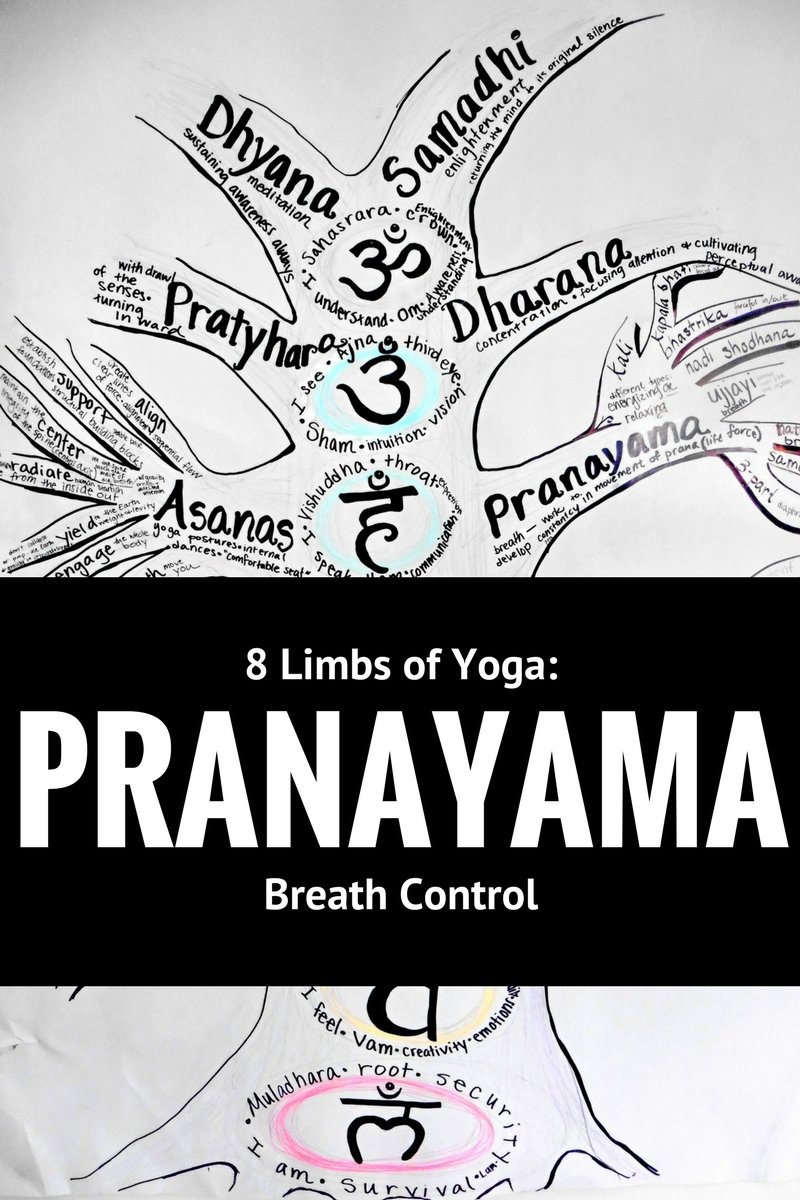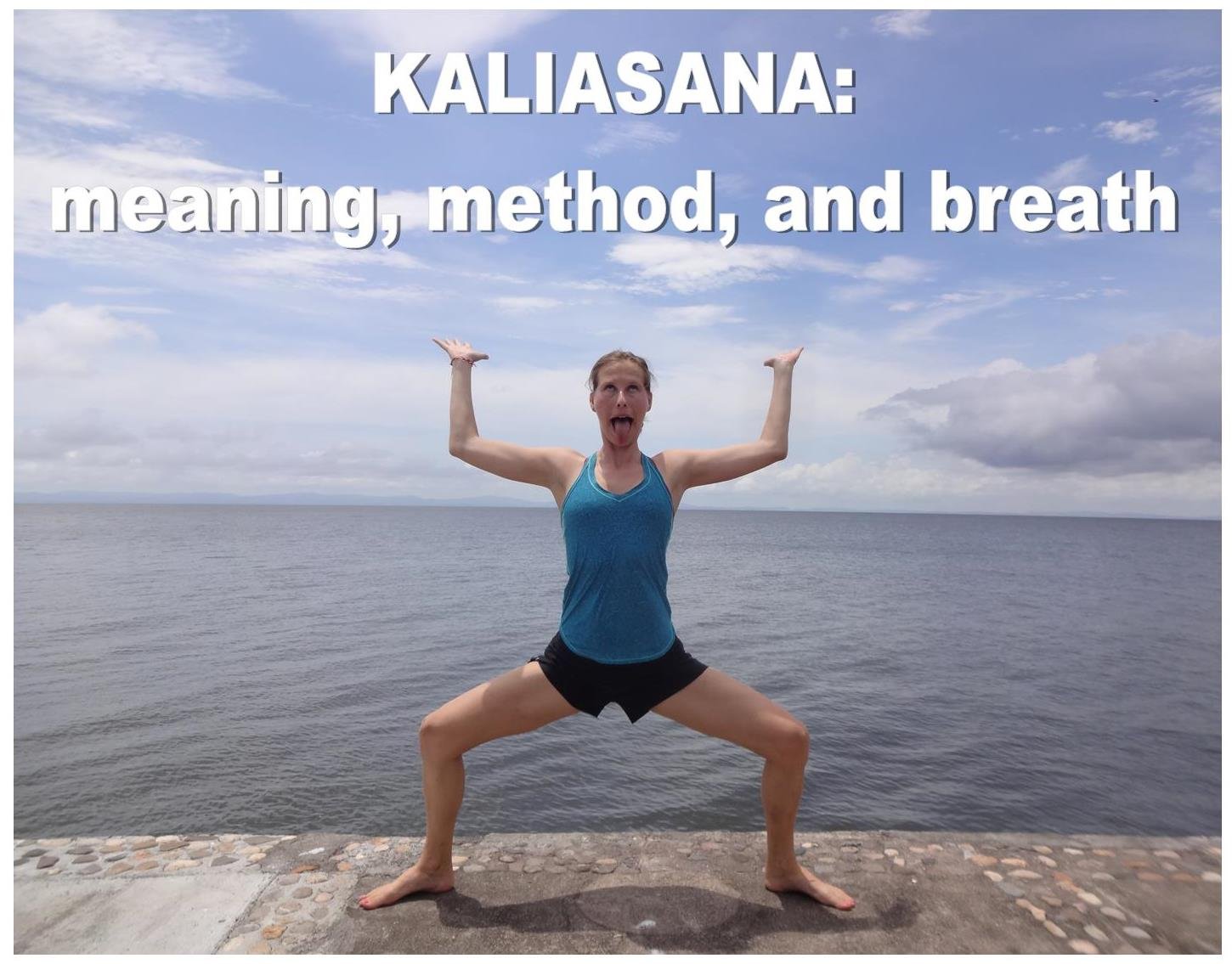Guide to the 8 Limbs of Yoga: Pranayama: breathing
Pranayama means breath control or breath expansion. It is the 4th of the 8 Limbs of Yoga. Prana means life force or vital energy. Yama means control or code of conduct. Actually, pranayama is a combination of prana and ayama. Ayama means expansion so pranayama is a way to expand your vital energy and vibrate on a higher frequency.
[Just so you know, this post contains affiliate links]
Vital energy flows through your body's 108 nadis or energy channels and through the 7 energy centers or chakras. Through pranayama breathing techniques, you can direct life force into your body and choose how to use it. Some pranayama techniques are meant to soothe the body, while others are aimed at energizing. Pranayama can also help clear blockages in your energy channels.Breath is composed for 4 parts:
pooraka (inhalation)
rechaka (exhalation)
antar kumbhaka (internal breath retention)
bahir kumbhaka (external breath retention)
Different pranayama practices involve different aspects of the breath. All pranayama techniques require you to focus on the breath. In this way, pranayama acts as a meditation, becoming the only necessary thought for that moment. Below are a few pranayama techniques to try.
Position for Pranayama
Guide to the 8 Limbs of Yoga: Pranayama: breathing
Guide to the 8 Limbs of Yoga: Pranayama: breathing

Most of these breathing techniques are typically practiced in a comfortable, tall (upright) seated position, eg. on a chair, in easy pose (sukhasana- below), or in lotus position (padmasana). Allow your preoccupations and worries to take a break so you can focus on your breath. If you can't do this from the start, don't worry it will probably come later as you concentrate on inhaling and exhaling.
Mudras can also be used during pranayama to help direct the flow of energy. Chin and jnana are classic mudras that are often used in conjunction with pranayama.
To begin, take a couple of deep breaths, emptying all of your breath out on each exhale, allowing your body to start with fresh new air and focus for your pranayama.
Natural breath
Natural breath can be the simplest pranayama, but that doesn't mean it's easy. Concentrating on your breath without controlling it is sometimes tough. Allow yourself to simply observe your breath, feeling it come in and out of your nose. Notice how it's cool going into your body and warm going out. Let go of everything else and just watch prana come and go. Allow it to pump through your body and mind.
3-part breath
With this technique, you will start to harness and control your breath. Empty all of the air out of your body, then inhale directly into your diaphragm, filling the lowest part of your belly first. As more breath enters your body, send it into your lungs, expanding through the sides of your rib cage. Finally, let the last bits of the inhale fill your chest and raise through your clavicles (collar bone) and scapula (shoulder blades). Your body is absolutely full of breath and prana.
On your exhale, you will empty the breath with equal care and concentration. Start by allowing the shoulders and the chest to drop back down toward the ribs as the breath underneath them empties. Then let the lungs and the rib cage contract as the breath leaves them. Finally, empty the breath from deep down in your diaphragm, the pit of your belly. You should be totally empty now, full of potential for your next breath pouring in.
This breathing technique is great for developing awareness of your body and breath. It also focuses the mind.
Samavrtti
Samavrtti is a practice of creating the same length inhale and exhale. Start by trying to breath in for 4 counts and out for 4 counts. Try to stabilize and equalize the length of your inhales and exhales. Once you are confident with this technique, try retaining the breath for a count at the top of the inhale before continuing. The third stage is retaining the breath at the bottom of the exhale instead. As you become more comfortable with this technique, you can try lengthening your count. When practicing sahita or retention, make the retention 1/3 as long as the count of the inhale and exhale (eg. inhale for 6, hold for 2, exhale for 6)
Samavrtti focuses the mind and calms the body.
Ujjayi
Ujjayi is often practiced during yoga. It is infamous for its soft oceanic sound, like waves rolling in and out. Others describe it as a hiss. Start with natural breath, breathing normally from your nose. Then slowly shift your awareness to your throat. Imagine you are breathing from the back of your throat. Pull the breath in and push it out, as if you are breathing from a small hole in your throat. Breath is directed to the back of the throat. Try to contract the glottis (vocal cords). There will be a slight sound almost like snoring. It doesn't need to be loud enough for others to hear, contrary to what many instructors may say.
Ujjayi tranquilizes and heats the body, soothing the nervous system and mind.+
Nadi Shodhana
Nadi shodhana is my favorite pranayama technique. In Nadi Shodhana, you breathes through one nostril and then the other. Using the right hand, you can block the right nostril with the thumb and the left nostril with the ring finger (middle and pointer are folded down). Inhale on the right with the left nostril closed, then change the hand positioning to open the left nostril and close the right nostril to exhale. Inhale left and change over to exhale on the right. Inhale right, then change your hand positioning and exhale left.
Nadi Shodhana is a great practice for reducing stress, removing toxins, and balancing energies.
To learn more and see pictures of the techniques, click the picture on the right.
Bhastrika
In Bhastrika, your diaphragm moves in and out like bellows stoking a fire. Take a deep breath in, drawing air into the diaphragm and expanding the belly.
Then breathe out forcefully through the nose, pushing the air out. With the same force, pull the air in again. Repeat this process ten times then take a break with normal breath. Then take another 4 rounds of bhastrika breath. This practice can be done with increasing speed as you become more familiar with it. Also, once you are comfortable, try bhastrika through one nostril at a time.
Bhastrika removes toxins and strengthens the nervous system. It increases the metabolism and clears out the airways.
Kapala Bhati
Kapala Bhati is similar to bhastrika, except the inhale is casual rather than forced. Inhale naturally then exhale by contracting the abdominal muscles, pushing the air out. The inhale will be a natural reaction to the forceful expulsion of breath. Repeat 10 times then take a break with normal breathing before continuing on to another round.
Kapala Bhati energizes the mind and clears the airways.
Kali


Kali breathing is great for bringing heat and energy into the body. There are a few variations on this breath. Click the photo above to learn more about the goddess Kali and building energy like she does.
Much of this information can be found in the Asana Pranayama Mudra Bandha book if you're interested in further reading.








